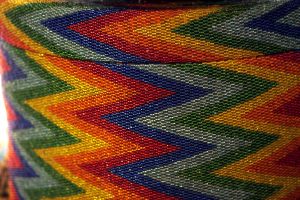When French settlers first arrived in Chicago in the 1600s, they asked the local Native people what they called the wild garlic plants that grew along the mouth of the river. That word, shikaakwa in the Miami-Illinois language, later inspired the name Chicago.
Although we owe much to the Native people who were the original stewards of the land we live on, Indigenous stories have historically been told from a colonizer's perspective and Indigenous characters have appeared only as harmful stereotypes.
Today, Indigenous authors share a tiny portion of the spotlight, but representation has come a long way from Little House on the Prairie, and the following novels by Indigenous authors feature characters whose experiences are just as diverse and unique as the 574 federally recognized Indigenous Nations in the United States.
Award-winning Canadian author Cherie Dimaline (Métis) is back with her newest novel Funeral Songs For Dying Girls. Perfect for fans of dark humor and paranormal romance, readers will be captivated by Winifred's quest to save her family's cemetery in Toronto. Things get complicated when Winifred is mistaken for a ghost by tourists, and also when she meets (and catches feelings for) an actual ghost of a girl who died from an overdose.
In Newbery Honor book A Snake Falls to Earth by Darcie Little Badger (Lipan Apache), themes of climate change, folktales and magic weave together in an unforgettable story about two distinct characters from vastly different worlds. Nina is a human girl who lives on Earth, while Oli is a cottonmouth snake person who lives in the Reflecting World. When the impacts of climate change endanger both Nina's grandmother and Oli's frog friend Ami, their stories intertwine. This novel is highly recommended for fans of speculative fiction and fantasy.
Fans of mysteries and complex characters will enjoy My Good Man by Eric Gansworth (Onondaga, Eel Clan). The year is 1992, and Brian is an Indigenous reporter in a small town whose editors want him to only write about the Tuscarora reservation where he grew up. But when someone he cares about back home is mysteriously assaulted, Brian must go home to uncover the truth.
Lou's summer looks complicated in The Summer of Bitter and Sweet, a debut novel by Jen Ferguson (who is Métis and white). Her mom has left to sell beadwork at powwows, she's forced to work at her uncles' ice cream shop with her toxic ex and she's just found out that her biological father is being released from prison. But on the plus side, her former best friend King has just returned to their prairie town and his presence brings her a sense of safety and hope.
Explore Indigenous Canadian history with the graphic novel This Place. Beginning with Confederacy in 1867, these ten stories by a variety of authors and illustrators illuminate the rich and complicated legacy of Indigenous people through stories that rarely appear in history books. Readers will appreciate the stunning artwork and, hopefully, learn something new about the lengths Indigenous people have gone to in order to survive after the arrival of Europeans in North America.
Read CPL's Land Acknowledgement, created in partnership with the American Indian Center in Chicago.



Add a comment to: Indigenous Stories for Teens